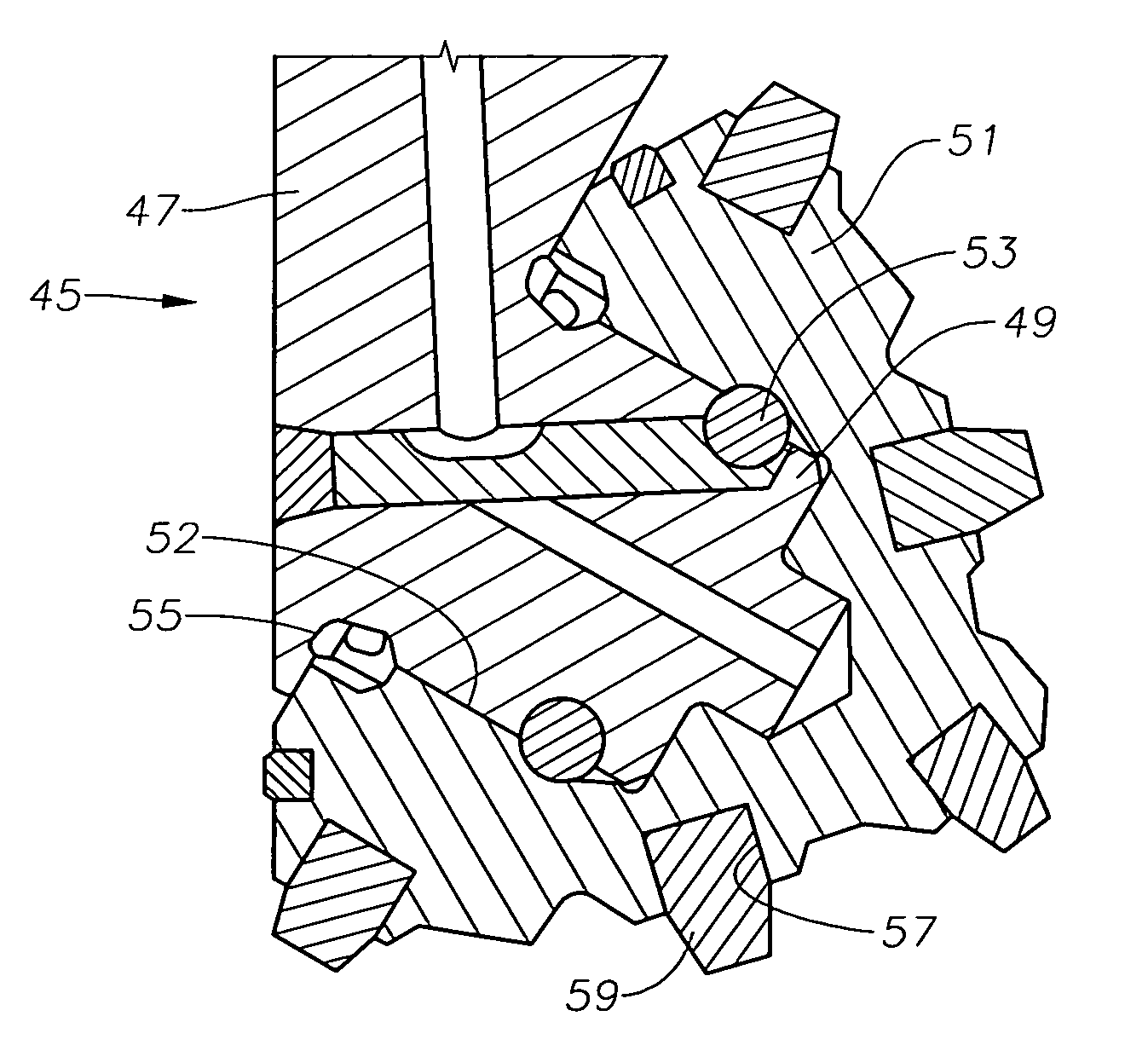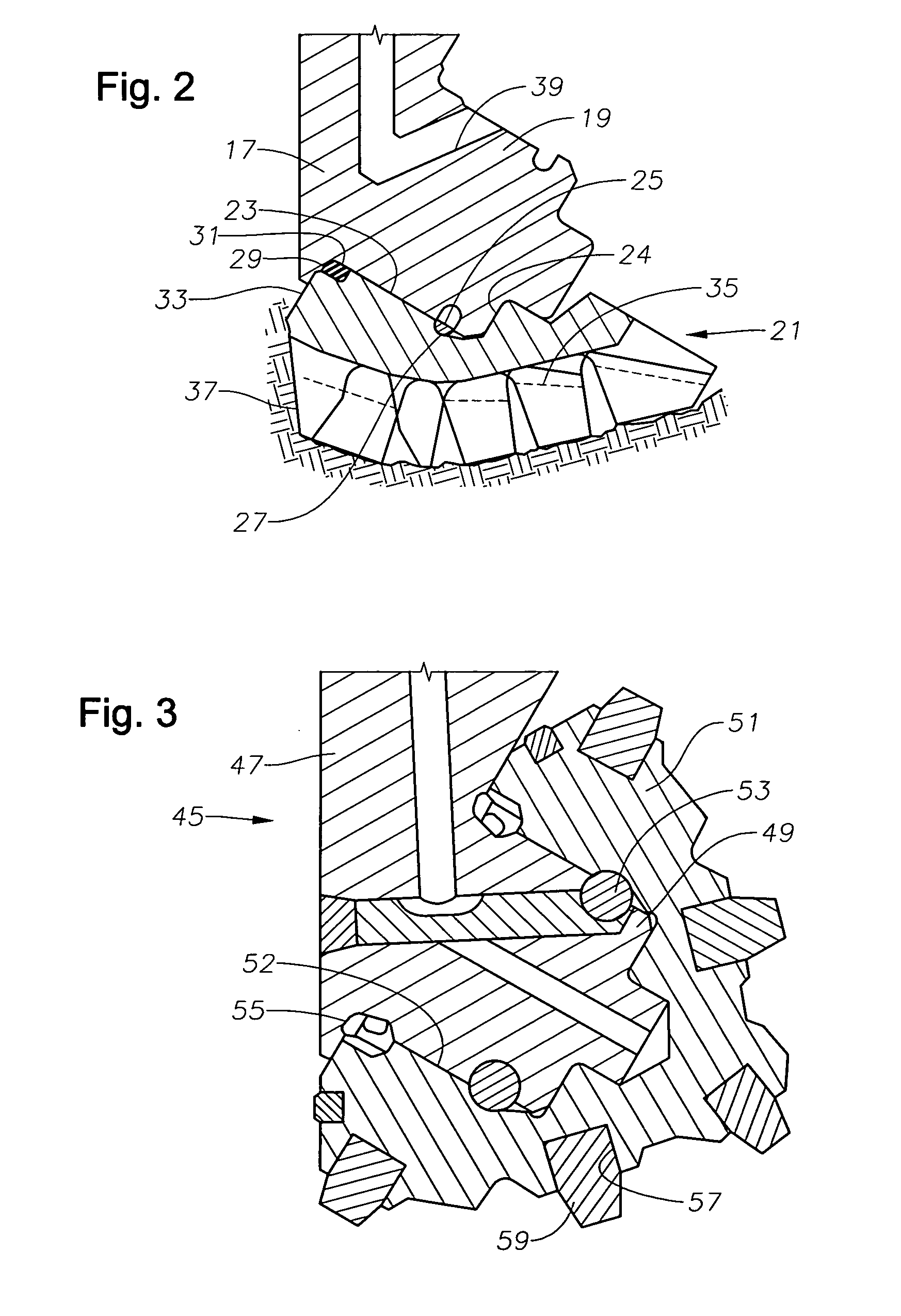Cemented tungsten carbide rock bit cone
- Summary
- Abstract
- Description
- Claims
- Application Information
AI Technical Summary
Benefits of technology
Problems solved by technology
Method used
Image
Examples
Embodiment Construction
[0021]Referring to FIG. 1, earth-boring bit 11 has a body 13 with threads 15 formed on its upper end for connection into a drill string. Body 13 has three integrally formed bit legs 17. Each bit leg 17 has a bearing pin 19, as illustrated in FIG. 2. Preferably, bit body 13 and bearing pins 19 are formed conventionally of a steel alloy.
[0022]Each bit leg 17 supports a cone 21 on its bearing pin 19 (FIG. 2). Each cone 21 has a cavity 23 that is cylindrical for forming a journal bearing surface with bearing pin 19. Cavity 23 also has a flat thrust shoulder 24 for absorbing thrust imposed by the drill string on cone 21. Each cone 21 has a lock groove 25 formed in its cavity 23. In the example shown, a snap ring 27 is located in groove 25 and a mating groove formed on bearing pin 19 for locking cone 21 to bearing pin 19. Cone 21 has a seal groove 29 for receiving a seal 31. Seal groove 29 is located adjacent a back face 33 of cone 21. Seal 31 is shown to be an elastomeric ring, but it co...
PUM
 Login to View More
Login to View More Abstract
Description
Claims
Application Information
 Login to View More
Login to View More - R&D Engineer
- R&D Manager
- IP Professional
- Industry Leading Data Capabilities
- Powerful AI technology
- Patent DNA Extraction
Browse by: Latest US Patents, China's latest patents, Technical Efficacy Thesaurus, Application Domain, Technology Topic, Popular Technical Reports.
© 2024 PatSnap. All rights reserved.Legal|Privacy policy|Modern Slavery Act Transparency Statement|Sitemap|About US| Contact US: help@patsnap.com










